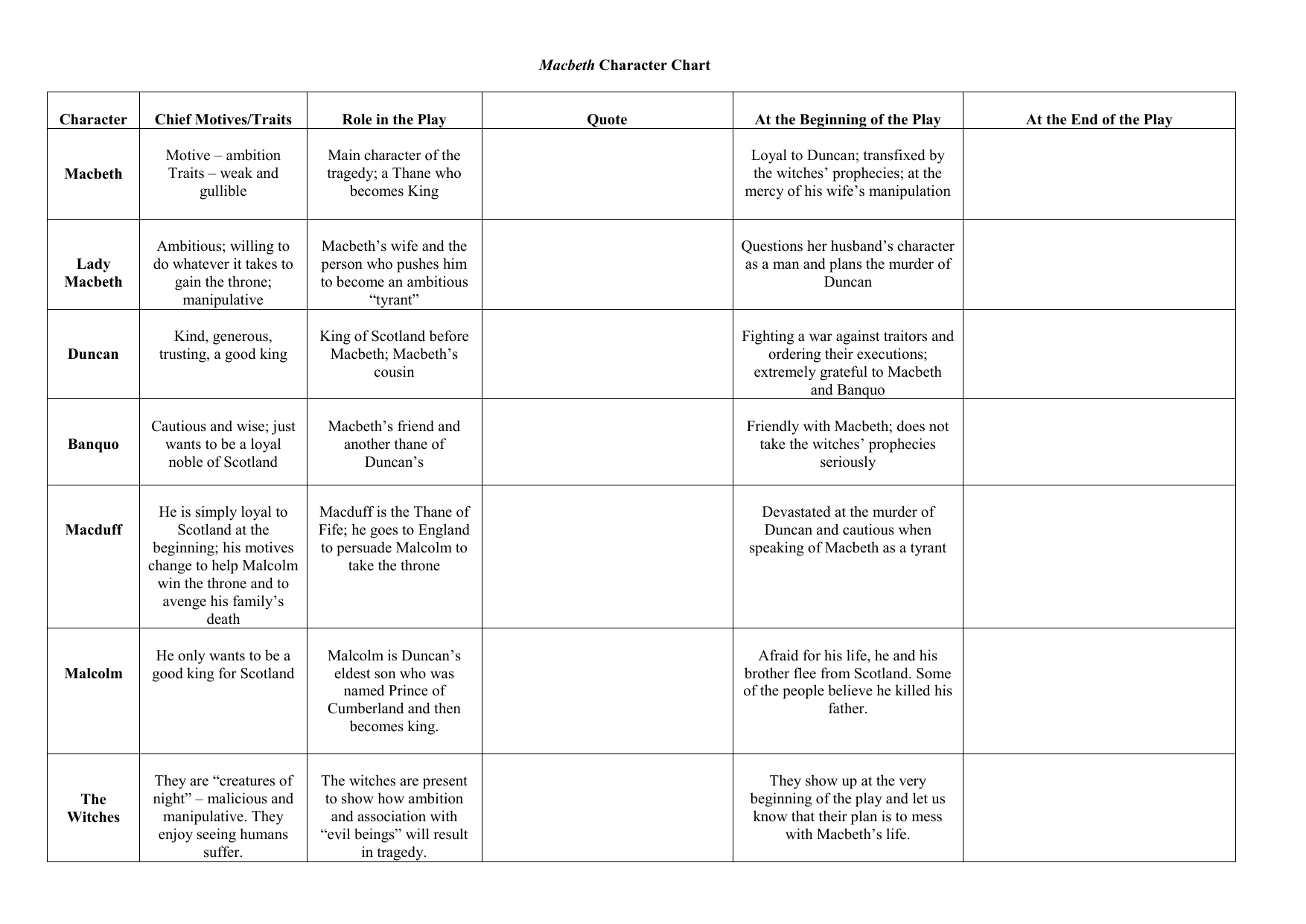

He sends a warning to Macduff and has his family killed. However, the Witches’ riddles also warn him of the forests moving, which Macbeth again chooses to ignore as he is certain that this could never happen. The witches tell him that “none of a woman born shall harm Macbeth”, which boosts his ego and makes him believe he is invincible. He forcefully says, “howe’er you come to know it: answer me”. In Act 4, Macbeth returns to the witches to learn about his fate, where he continues the demanding tone from the start of the play. We could argue that Macbeth is not an irrevocably evil character, like Shakespeare’s other famous villains (e.g. Therefore, Shakespeare could be critiquing how obsessive ambition can affect a weak character. He shouts “don’t shake thy gory locks at me!”, revealing his total loss of strength and bravery and his guilty conscience. Macbeth’s weakness undeniably returns when Banquo’s ghost begins to appear. However, instead of killing Banquo himself, he hires murderers to do it for him, revealing how he still cannot shake away his inner morality, though he still allows his friend to be killed on his own accord. Though we have seen Macbeth’s loss of power so far, in Act 3 his ambition begins to consume his sense of guilt when his best friend, Banquo, becomes suspicious of Macbeth. In the end, his guilt and weakness take over, and Lady Macbeth is again forced to do the dirty work when Macbeth refuses to plant the bloody dagger. This was regicide, which was an act punishable by death. This portrays his guilt, again caused by his sense of morality, as he is hesitant to go ahead with murdering the king. He questions, “is this a dagger which I see before me?”. Macbeth’s mental state further decays in Act 2 Scene 2, when he begins to hallucinate in his soliloquy. This further emphasises Macbeth’s weakness, as we watch his craving for power and innate ambition conflict with his morality. This would have been strange to a Jacobean audience, who were used to seeing women be submissive. In this scene, he lets Lady Macbeth take control, which is established through the significant number of lines she has in comparison to Macbeth. In Act 1 Scene 7, we begin to see Macbeth’s strength deteriorate. However, is Macbeth truly as strong and authoritative as he makes out to be? He wishes to “hide his black and deep desires”, which reveals his inner turmoil and foreshadows his loss of control. The imperatives in his dialogue establish his dominance over the witches, who further fuel his ambition with their prophecies. Here he visits the witches and uses a commanding tone when he asks “speak if you can, what are you?”.


AuthoritativeĪs the play progresses, his authoritative nature only continues to grow as we see his demanding qualities in Act 1 Scene 3. Therefore, Shakespeare could be hinting at an overarching theme of how obsessive violence can inevitably lead to one’s downfall. This also foreshadows Macbeth’s own fate, when he is beheaded at the end of the play. Shakespeare cleverly depicts Macbeth as both heroic and violent after he beheads an enemy soldier in battle, embodying the spirit of a typical Jacobean man. During King James’ reign, it was typical that courageous and valiant soldiers were promoted after being brave in battle. This only fuels his ego and sense of self pride. At the beginning of the play, we are exposed to Macbeth’s heroic and brave character traits when he is held a “great thane!” and “worthy gentleman” by King Duncan in Act 1 Scene 2, who crowns him Thane of Cawdor.


 0 kommentar(er)
0 kommentar(er)
